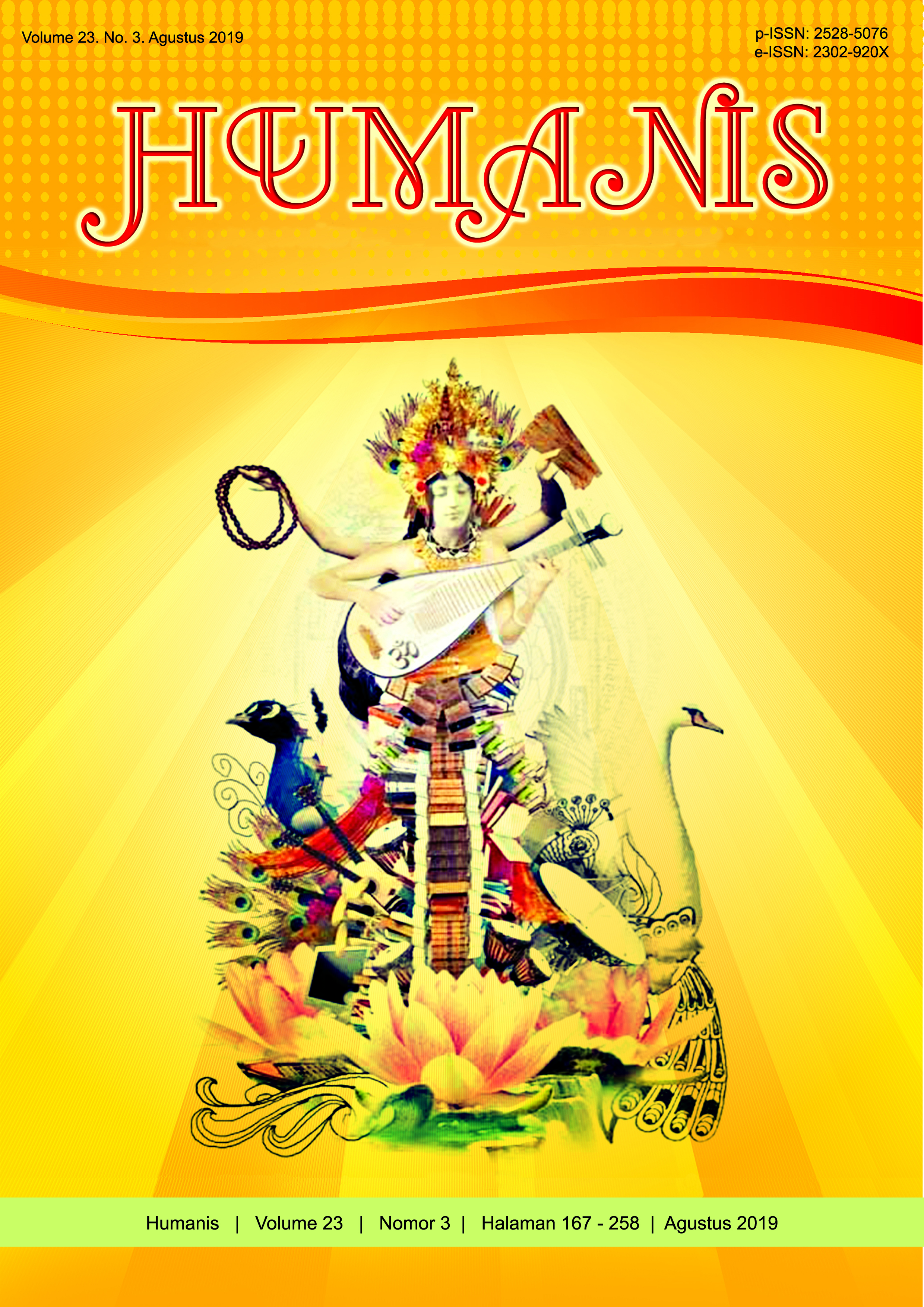Peran Tokoh Agama dalam Birokrasi Pemerintahan Raja Marakata
Abstract
In the period of ancient Bali, religious leaders who were generally known to play a role in religious aspects had also an essential role in the government bureaucracy of a king. This was seen in the reign of King Marakata that the inscriptions he issued in 944 ?aka to 962 ?aka. The inscriptions claimed that the existence of royal government positions held by complete religious leaders indicated by their titles and symbols. There were two purposes of this study. The first was to explain the position and role of religious leaders in the bureaucracy of the government of King Marakata. Second, explained about the mutation of positions of religious leaders. The method used in data collection is in the form of observation, interviews, and using library research. The analysis used is a qualitative analysis, comparative analysis, and contextual analysis. The theories used are structural functionalism theory and power relations theory. Based on theanalysis of the contents of King Marakata’s inscriptions, the results obtained that the position and the role of religious leaders are interrelated. Religious leadersdomiciled in the holy place and government bureaucracy. Religious leadersact as clergy and officials both as structural officials and functional officials. The mutation of positions of the religious leaders occurred on his act as an official or clergy. Factors that affect mutations of positions are death, resignation, a dismissal, the appointment, a decline or a promotion, and ability.
Downloads
References
Astra, I Gede Semadi. 1997. "Birokrasi Pemerintahan Bali Kuno Abad XII-XIII: Sebuah Kajian Epigrafis". Disertasi. Universitas Gadjah Mada.
____, I Gede Semadi. 2008. ”Kedudukan dan Peranan Tokoh Agama dalam Usaha Bina Negara; Bercermin pada Masa Lampau” dalam Pusaka Budaya dan Nilai-nilai Religiusitas. Denpasar: Jurusan Arkeologi Universitas Udayana. 10-29.
Bagus, I Gusti Ngurah. 1993. “Kebudayaan Bali” dalam Manusia dan Kebudayaan di Indonesia. Jakarta: Djambatan. 286-306.
Budiastra, Putu. 1969. "Djaman Pemerintahan Marakata". Skripsi. Fakultas Sastra, Universitas Udayana.
Goris, R. 1954. Prasasti Bali I. Bandung: NV Masa Baru.
Koentjaraningrat. 2009. Pengantar Ilmu Antropologi Edisi Revisi 2009. Jakarta: PT Rineka Cipta.
Laksmi, Ni Ketut Puji Astiti. 2017. “Identitas Keberagamaan Masyarakat Bali Kuno pada Abad IX-XIV Masehi: Kajian Epigrafis”. Disertasi. Program Pasca Sarjana, Fakultas Ilmu Pengetahuan Budaya, Universitas Indonesia.
Mahendra, Ida Bagus Weda. 1984. “Kedudukan dan Peran Tokoh Agama pada Abad IX-XI di Bali”. Skripsi. Program Studi Arkeologi, Fakultas Sastra, Universitas Udayana.
Pudja, G., Tjokorda Rai Sudharta. 2003. Manawa Dharmaśastra (Manu Dharmaśastra) atau Weda Smrti Compendium Hukum Hindu. Jakarta: CV. Nitra Kencana Buana.
Setiawan, I Ketut. 2008. “Mengamati Aktivitas Keagamaan Masyarakat Bali Kuno Melalui Tinggalan Arkeologi” dalam Pusaka Budaya dan Nilai-nilai Religiusitas. Denpasar: Jurusan Arkeologi Universitas Udayana. 46-58.
Sutinah, Siti Norma. 2004. "Stratifikasi Sosial: Unsur, Sifat, & Perspektif" dalam Sosiologi: Teks Pengantar dan Terapan. Jakarta: Kencana.151-167.
Wardi, I Nyoman. 1986. "Keagamaan pada Zaman Bali Kuno Abad XII-XIII (Sebuah Kajian Epigrafis)". Skripsi. Jurusan Arkeologi, Fakultas Sastra, Universitas Udayana.


















